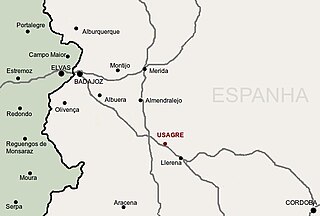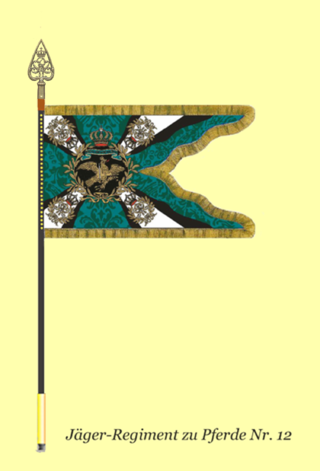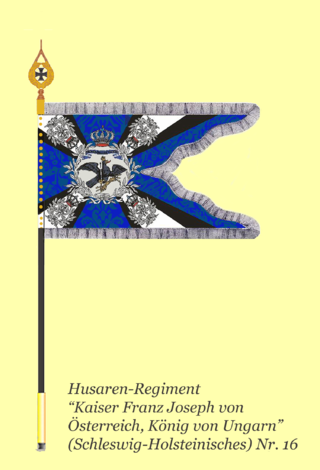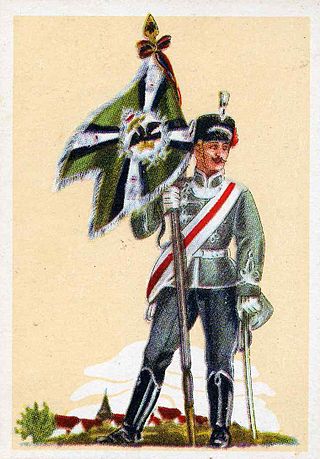Related Research Articles
The 1st New Jersey Cavalry Regiment was a Union Army regiment from the U.S. state of New Jersey that participated in the American Civil War.

The Third Army was originally established in Skopje and later defended the northeastern provinces of the Ottoman Empire. Its initial headquarters was at Salonica, where it formed the core of the military forces that supported the Young Turk Revolution of 1908. Many of its officers who participated in the Revolution, including Enver Pasha and Mustafa Kemal Atatürk, rose to fame and power.

In the Battle of Usagre on 25 May 1811, Anglo-Allied cavalry commanded by Major-General William Lumley routed a French cavalry force led by Major-General Marie Victor Latour-Maubourg at the village of Usagre in the Peninsular War.
The 3rd Army Corps was an Army corps in the Imperial Russian Army formed on 19 February 1877.

In the Battle of Campo Maior, or Campo Mayor, on 25 March 1811, Brigadier General Robert Ballard Long with a force of Anglo-Portuguese cavalry, the advance-guard of the army commanded by William Beresford, clashed with a French force commanded by General of Division Marie Victor de Fay, marquis de Latour-Maubourg. Initially successful, some of the Allied horsemen indulged in a reckless pursuit of the French. An erroneous report was given that they had been captured wholesale. In consequence, Beresford halted his forces and the French were able to escape and recover a convoy of artillery pieces.
The 1st King's Mounted Rifles were a light cavalry regiment of the Royal Prussian Army from 1901 to 1918. When the Imperial German Army was reorganized as the Reichsheer, 'A Squadron'/'10th Horse' became bearer of the regiment's tradition.
The 2nd Mounted Rifles were a light cavalry regiment of the Royal Prussian Army. The regiment was formed 1 October 1905 in Langensalza where it belonged to the XI Army Corps.

The 6th Mounted Rifles were a light cavalry regiment of the Royal Prussian Army. The regiment was formed 1 October 1910 in Erfurt.
The 9th Mounted Rifles were a light cavalry regiment of the Royal Prussian Army. The regiment was formed 1 October 1913 in Insterburg.
The 10th Mounted Rifles were a light cavalry regiment of the Royal Prussian Army. The regiment was formed 1 October 1913 in Angerburg.

The 12th Mounted Rifles were a light cavalry regiment of the Royal Prussian Army. The regiment was formed 1 October 1913 in St. Avold.

The 13th Mounted Rifles were a light cavalry regiment of the Royal Prussian Army. The regiment was formed 1 October 1913 in Saarlouis.

The 16th (Schleswig-Holstein) Hussars “Emperor Francis Joseph of Austria, King of Hungary” were a cavalry regiment of the Royal Prussian Army. The regiment was formed in 1866. It fought in the Franco-Prussian war and World War I. In 1872 it was named after Emperor Francis Joseph I of Austria, who became its colonel-in-chief. The regiment was stationed in Gottorf Castle until its disbanding in 1918.
The 2nd Royal Bavarian Chevau-légers "Taxis" were a light cavalry regiment of the Royal Bavarian Army. The regiment was formed in 1682 and disbanded in 1919. After the First World War the regiment's traditions were carried on by the 3rd squadron of the 17th (Bavarian) Reiter Regiment, and during the Third Reich by the 25th Panzer Regiment.
The V Corps of the Ottoman Empire was one of the corps of the Ottoman Army. It was formed in the early 20th century during Ottoman military reforms.
The X Corps of the Ottoman Empire was one of the corps of the Ottoman Army. It was formed in the early 20th century during Ottoman military reforms.
The Vardar Army of the Ottoman Empire was one of the field armies under the command of the Western Army. It was formed during the mobilisation phase of the First Balkan War.
The 2nd Guards Cavalry Division was a Guards light cavalry division of the Imperial Russian Army.

The 11th Hussar Regiment, initially called the 2nd Westphalian Regiment, was a notable cavalry unit of the Royal Prussian Army and the German Imperial Army.
Milivoje Čolak-Antić was a Royal Serbian Army officer, most notable for his command of Chetniks volunteer detachments in Macedonia during the Balkan Wars, and his actions with Operation Departments during World War I for which he received multiple awards.
References
- Schulz, Hugo (1992). Die preussischen Kavallerie-Regimenter 1913/1914 nach dem Gesetz vom 3. Juli 1913. Augsburg: Weltbild. p. 186. ISBN 3893503439.